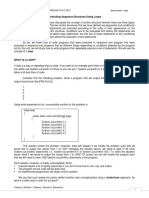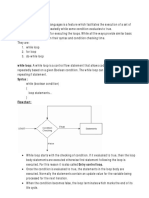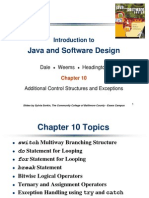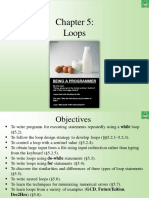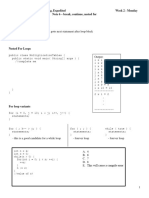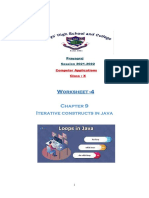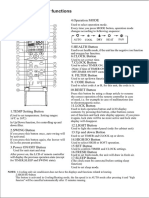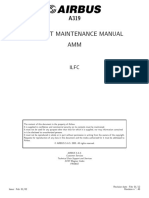0% found this document useful (0 votes)
69 views17 pages4 For Loop Part 1
Here is a program that displays the Buzz numbers between 1 and 100:
```java
class BuzzNumbers {
public static void main(String[] args) {
for(int i=1; i<=100; i++) {
if(i%7==0 || i%10==7) {
System.out.print(i + " ");
}
}
}
}
```
This uses a for loop to iterate from 1 to 100. Inside the loop, it checks if the current number (i) is divisible by 7 using the modulo (%) operator, or if the ones place digit is 7 using modulo 10. If either condition is true, it prints the number.
Uploaded by
Aakriti BansalCopyright
© © All Rights Reserved
We take content rights seriously. If you suspect this is your content, claim it here.
Available Formats
Download as PDF, TXT or read online on Scribd
0% found this document useful (0 votes)
69 views17 pages4 For Loop Part 1
Here is a program that displays the Buzz numbers between 1 and 100:
```java
class BuzzNumbers {
public static void main(String[] args) {
for(int i=1; i<=100; i++) {
if(i%7==0 || i%10==7) {
System.out.print(i + " ");
}
}
}
}
```
This uses a for loop to iterate from 1 to 100. Inside the loop, it checks if the current number (i) is divisible by 7 using the modulo (%) operator, or if the ones place digit is 7 using modulo 10. If either condition is true, it prints the number.
Uploaded by
Aakriti BansalCopyright
© © All Rights Reserved
We take content rights seriously. If you suspect this is your content, claim it here.
Available Formats
Download as PDF, TXT or read online on Scribd
/ 17

